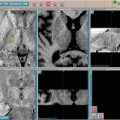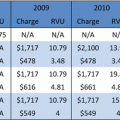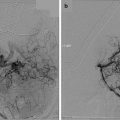© Springer Science+Business Media New York 2015
Lawrence S. Chin and William F. Regine (eds.)Principles and Practice of Stereotactic Radiosurgery10.1007/978-1-4614-8363-2_3737. Pineal Region Tumors: Viewpoint—Chemotherapy
(1)
Barrow Neurological Clinics, 500 W. Thomas Rd., Suite 300, Phoenix, AZ 85013, USA
(2)
National Brain Tumor Center, Capital Institute for Neurosciences, Capital Health Medical Center-Hopewell, Two Capital Way, Suite 456, Pennington, NJ 08534, USA
Introduction
Tumors involving the pineal gland are uncommon, accounting for 4–11 % of intracranial tumors in children and 0.4–1 % of such tumors in adults [1]. As noted in preceding chapters, the conventional classification system divides them into four broad histologic types, and treatment is generally based on this type (rather than anatomic location). These types are: (1) germ cell, (2) pineal cell, (3) glial cell, and (4) miscellaneous. Speaking generally, chemotherapy has an adjunctive role in most of these tumors.
Regarding glial tumors, little will be said here as the chemotherapeutic management is not different for those arising in the pineal as opposed to elsewhere; interested readers are referred to Chap. 20 in the current volume. The following may also be seen here: meningiomas, choroid plexus papillomas, neuronal cell tumors, ependymomas, lipomas, and metastases. Again, the reader is referred to the appropriate chapters.
As noted elsewhere in the current volume, biopsy of pineal tumors is strongly recommended prior to the start of therapy. In occasional cases, magnetic resonance imaging (MRI) of the brain with cerebrospinal fluid (CSF) sampling may be sufficient to establish a diagnosis of certain hormone-secreting germ cell tumors (GCTs). (β[beta]HCG for choriocarcinoma, α[alpha]FP for yolk sac, and embroyonal carcinoma) An MRI of the entire spine is recommended to look for “drop metastases” in the case of pineoblastoma.
Recent years have seen substantially increased interest in the role of chemotherapy for these conditions. At the time of writing, the NIH lists over 50 studies including patients affected by one of these tumors, the majority of which include a chemotherapeutic element. Overall, regimens tend to be similar in adults and children, reflecting a belief in the similarity of tumor biology across the lifespan. Likewise, given their rarity, the tendency has been to lump rather than split in retrospective reviews and in designing effective regimens.
Germ Cell Tumors
Primary GCTs account for approximately half of pineal tumors. Central nervous system (CNS) GCTs mostly arise in the midline: 80 % or more arise in structures near the third ventricle, with the region of the pineal gland being the most common site of origin. Multifocal disease is common. CNS GCTs are seen most commonly in childhood and young adulthood. These tumors can be divided into germinomas (aka seminomas, also the most common type of testicular cancer) and nongerminomatous GCTs, which include teratoma (from Lt. teratos = deformity, consisting of tissues derived from all three embryonal layers), embryonal cell carcinoma (or stem cell, arising from a portion of cells without which embryogenesis cannot continue), yolk sac tumor (from O.E. geolu = yellow), and choriocarcinoma (from Gk. khorion = membrane enclosing the fetus).
Germinomas
For germinomas, conventional is to aim for subtotal resection where possible, with adjuvant radiation. As they are particularly sensitive to radiation, this remains the cornerstone of treatment, typically involving ventricular irradiation with a local boost [2]. Five-year survival in a series of 49 germinomas was reported as 88 ± 5 % for such an approach. At one time complete craniospinal irradiation was employed prophylactically; however, given the rates of adverse sequelae with this approach, surveillance is now preferred [3].
Generally these tumors are also sensitive to chemotherapy and the following agents have all been used with some success: alkylating agents (cisplatin, carboplatin, cyclophosphamide, ifosphamide) as well as etoposide, vinblastine, adrimycin, and bleomycin. A platinum-based agent with etoposide is most commonly employed. Given how sensitive they are to carboplatin in particular, it was hoped at one point that this single agent may be able to replace radiation completely, although this no longer is a widely-advocated approach [4].
Neo-adjuvant chemotherapy with a platinum-based regime has been advocated by a number of centers, although it remains to be seen whether this is of additional benefit by comparison with the regimen proposed above [5]. A phase II study by Allen et al. in 1994 showed complete response rates in 7 of 11 pediatric patients receiving carboplatin (150 mg/m2 weekly, 2–4 cycles) [6].
In cases with dissemination there is clearly a role for craniospinal irradiation and for adjuvant chemotherapy. Likewise, in cases of local or systemic relapse, adjuvant chemotherapy is generally recommended. Given the relatively low incidence of any of these complications, decisions are typically based on small retrospective studies. Plantinum and etoposide-based regimens are commonly employed, although bleomycin and cyclophosphamide have also been used [7]. Cyclophosphamide with re-irradiaiton had previously been suggested as optimal monotherapy for recurrence, with response rates of up to 5 months [8].
Recent trials have also explored the possibility of reducing radiation dosing by giving adjuvant chemotherapy. One study using cisplatin and etoposide (up to six cycles) following whole brain or ventricular irradiation in 16 pediatric patients has shown promising results [9].
It bears noting that there have been attempts to eliminate radiation therapy altogether from the treatment regimen. The largest of these was initiated by the international CNS GCT study group.
This was a trial with a common protocol for all GCTs [10]. Of 71 patients enrolled, 45 had germinomas. Induction chemotherapy consisted of four cycles of carboplatin, etoposide, and bleomycin chemotherapy, a regimen adapted from systemic GCT experience. (Cisplatin is considered more effective than carboplatin for systemic disease.) Those achieving complete remission (CR) were given an additional four cycles. An intensified regimen was offered to those not achieving complete remission. Of the germinomas, 37 of 45 achieved complete response. However, the relapse-free survival was disappointing, with approximately 50 % of patients with each pathologic subtype experiencing relapse or progression. Twenty eight of 55 patients in complete remission without irradiation subsequently developed tumor recurrence at a median time of 18 months from diagnosis.
From this experience, it appears that aggressive chemotherapy alone can induce durable complete remissions in only approximately 50 % of patients. Given the superior results with radiation for germinomas, the use of chemotherapy without radiation cannot be considered routine for these patients.
Non-germinomatous GCTs
Mature teratoma, like germinoma, tends to have a favorable prognosis and remission may be achieved with resection alone. However, given the generally unfavorable prognosis of the other tumors in this class, chemotherapy is not controversial.
Historically non-germinomatous GCTs have been analyzed together rather than separately and so relatively little is known about their relative response to chemotherapy, i.e., whether regimes should include the particular histology in their design. Of the group, choriocarcinomas tend to have a significantly worse prognosis than the others.
A consensus has emerged that adjuvant chemotherapy should generally include a platinum-based agent. A recent review advises first line adjuvant treatment with POMB-ACE (cisPlantin, vincristine (Oncovorin), methotrexate, bleomycin, actiomycin-d, cyclophosphamide, etoposide) or EMA/CO (etoposide, methotrexate actinomycin-d, folinic acid, cyclophosphamide, vincrisite (Oncovorin)) [11].
Other proposed adjuvant regimes include cisplatin, ifosphamide, and etoposide [12], PVB (cisplatin, vinblastine, bleomycin) and PIV (cisplatin, ifosphamide, bleomycin) [13]. Earlier approaches with neo-adjuvant cisplantin and etoposide followed by adjuvant carboplatin, etoposide, bleomycin, and vinblastine also confirmed improvement with this multimodality approach [14]. These are typically selected on the basis of tolerability and employed over 4–6 cycles. All of the platinum-based regimens have improved prognosis for these tumors. However, given that this tends to remain rather dismal (3-year survival rates reported as 30 % for adults, 60 % for those age under 16), clearly there remains room for improvement in these regimes [13]. In all cases, following hormonal markers, typically in serum, it is advised to assess response to treatment.
For recurrence, further chemotherapy is advocated, typically platinum-based and more aggressive than before, although a consensus has yet to emerge on an optimal regimen.
Metastases have been reported with these tumors, most commonly when mixed (i.e., a non-germinomatous element is present). These can occur as a result of transit through a VP-shunt or independently—presumably hematogenously. If well localized, these may be treated with irradiation, typically with a platinum and etoposide combination.
The frustratingly high relapse rate and the initial refractoriness of nongerminoma GCTs to chemotherapy has led to the use of high-dose chemotherapy (HDC) and autologous stem cell transplant for either relapse disease or to consolidate partially responsive disease. This strategy is based on experience with systemic GCTs, as well as the increasing experience with other high-risk primary brain tumors, such as medulloblastoma. One of the largest such experiences was published by Modak et al. [15], a group based in New York and one of the leaders in the field of high-dose therapy and stem cell rescue for brain tumors. Like the CNS GCT trial above, it included all germ-cell tumors, in this case 21 patients with CNS GCTs who had either relapsed or progressed, despite receiving chemotherapy and/or radiation therapy. They received high-dose thiotepa with another agent, typically etoposide, often with carboplatin. Resection after chemotherapy was undertaken when practical. Posttransplant radiation therapy was added focally or to the entire neural axis whenever feasible. Four of 12 patients with non-germinomatous GCTs achieved CR with a range of 24–55 months at time of publication. One was alive with residual disease at 51 months (7 of 9 patients with recurrent germinomas survived disease-free, with a range of 6–87 months, median 48).
Stay updated, free articles. Join our Telegram channel

Full access? Get Clinical Tree








